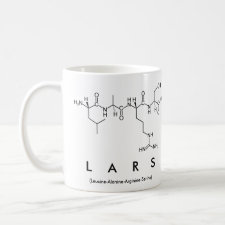
Authors: Spégel P, Andersson LI, Nilsson S
Publication date: 2003
Chapter title: Chiral separations by HPLC using molecularly imprinted polymers.
Chapter number: 9
Page numbers: 217-229.
DOI: 10.1385/1-59259-648-7:217
Book title: Chiral separations: methods and protocols
Editors: Gübitz G, Schmid MG
Publisher: Humana Press Inc.
City: Totowa, NJ
ISBN: 1-58829-150-2
Series title: Methods in molecular biology
Volume number: 243
Abstract: In the past decade the molecular imprinting technology (MIT) has developed to become a promising approach for the synthesis of artificial receptors. The technique is based on a template-assisted polymerization, and the resultant molecularly imprinted polymer (MIP) is able to rebind the template molecule with a high selectivity. Two main approaches to prepare MIPs can be recognized, i.e., the covalent imprinting and the noncovalent imprinting. In the covalent MIP the interactions are based on weak covalent bonding, which offers strong interactions, however, the kinetics of this recognition mechanism are slow. Today, the noncovalent approach is by far the most utilized for analytical applications, and therefore, covalent imprinting will not be covered in this chapter.
In separation science, the MIP has successfully been used as an affinity phase in capillary electrochromatography (CEC), high-performance liquid chromatography (HPLC), thin-layer chromatography (TLC), and supercritical fluid chromatography (SFC). Of these separation techniques, the MIP-HPLC is the oldest and most widely explored. The use of the MIP as a stationary phase in HPLC offers a means of obtaining a predetermined selectivity, with the imprinted analyte being the most retained when compared to closely resembling molecules.



Join the Society for Molecular Imprinting

New items RSS feed
Sign-up for e-mail updates:
Choose between receiving an occasional newsletter or more frequent e-mail alerts.
Click here to go to the sign-up page.
Is your name elemental or peptidic? Enter your name and find out by clicking either of the buttons below!
Other products you may like:
 MIPdatabase
MIPdatabase









